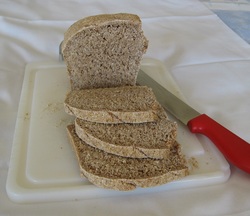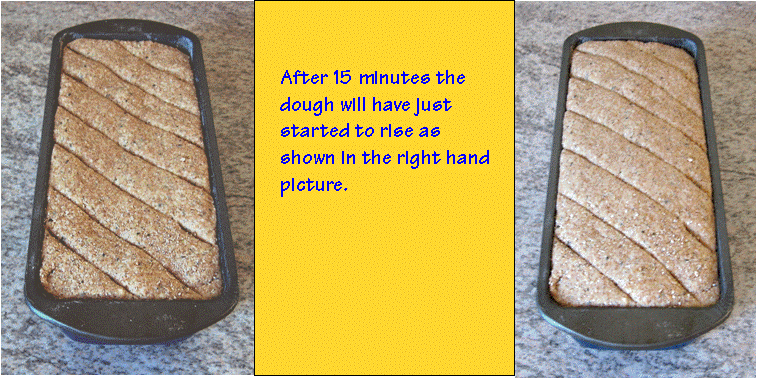Bake your own bread
A quick and easy recipe created by the late Doris Grant

- To make two loaves of about 800g each you will need:
- 1200g (100%) Wholemeal flour - organic if possible
- 700 ml (approx) Warm water (hand hot)
2 teaspoons Salt
- 1 sachet (5.0g) Dried yeast (Super Active or Bakers’ Yeast)
Bread baking is quicker if the flour and tins are faintly warm.
The dried yeast and the salt can be thoroughly mixed with the flour by shaking well in a large polythene bag before turning into a bowl and adding the water. Add the water slowly and mix until the flour is evenly wetted, then mix thoroughly for several minutes.
The dough should be slightly slippery so that it leaves the side of the bowl when tilted. Grease and flour the bread tins. Turn the dough on to a work surface and knead briefly. Cut into two equal portions then turn into the tins and press down. Cut shallow cross lines on the top of the dough. Turn on the oven to preheat to 240°C. Put the tins inside a large polythene bag and leave in a warm place for about 15 minutes - just until the dough BEGINS to rise. The dough should NOT be allowed to double or rise and puff up as with white flour - but smoothing out on top and seen to be rising. The bread will continue to rise in the oven.
Cook for about 30 minutes then remove the loaves from the tins and return them to the oven for a further five minutes. When cooked they should sound hollow when tapped on the bottom.
Use a loaf tin size approx 215mm x 110mm. (Tin size approx conversion from English size 9” x 5”)
.
Note: It is economical to make two loaves putting one loaf in the freezer and eating the other. This saves oven time.
milling your own wheat..........

Of course, the best possible way to ensure that the flour is fresh is to mill your own from the actual wheat grain using an electric stone mill. This way all the goodness is retained right up until the time of milling. The wheat grain should be organically grown to avoid any residues of pesticides which can accumulate in the bran layer. The resulting flour should be used within 36 hours of milling after which time it will begin to lose some of its nutritional value.

